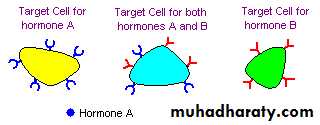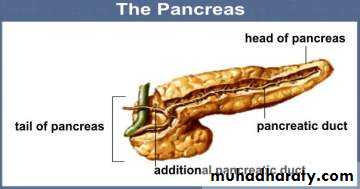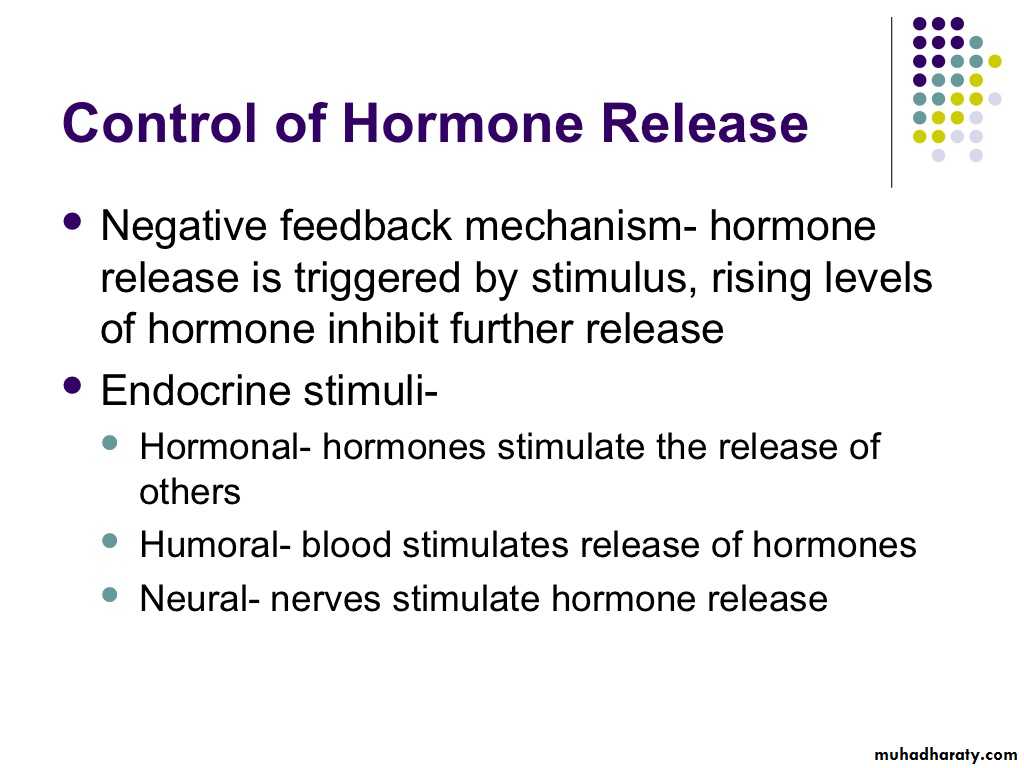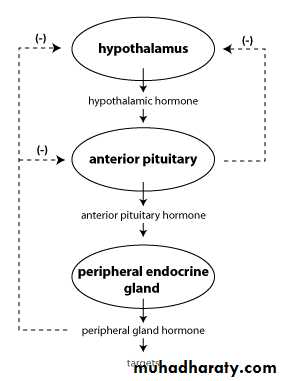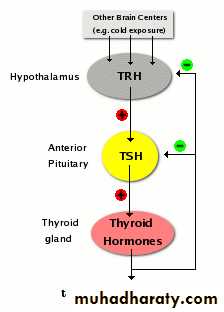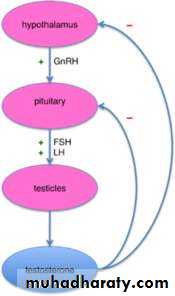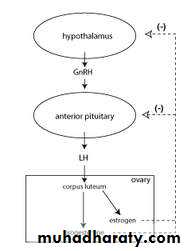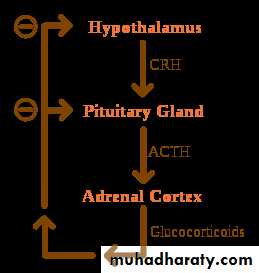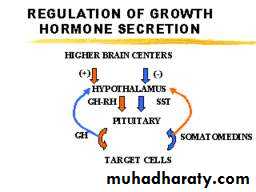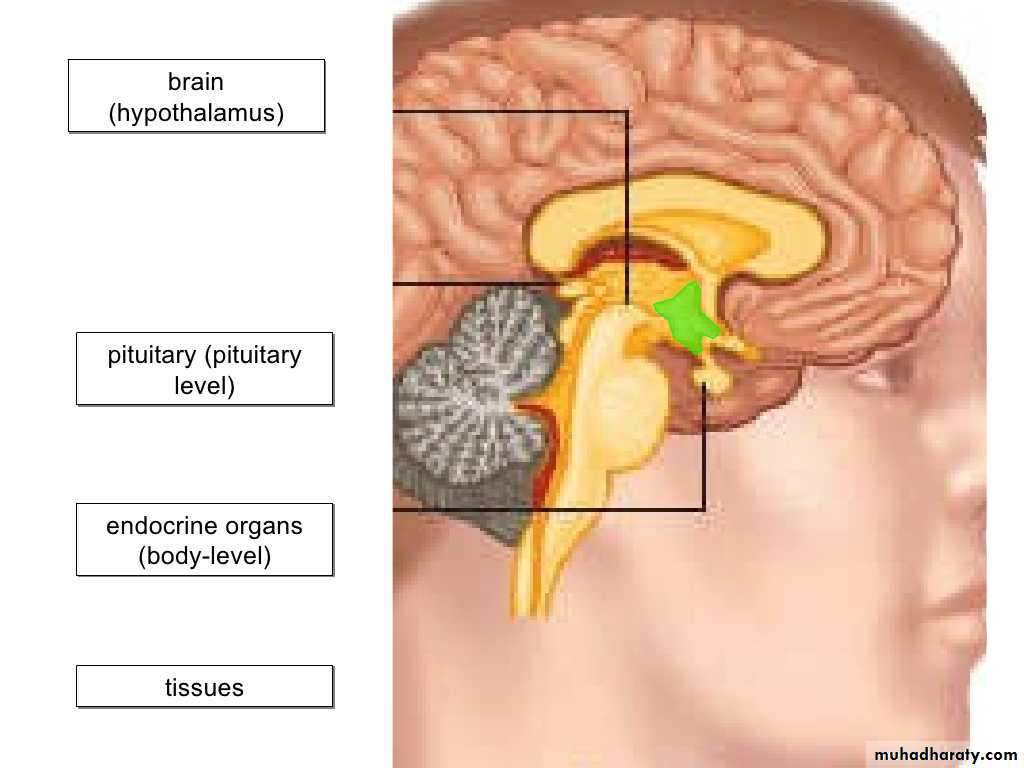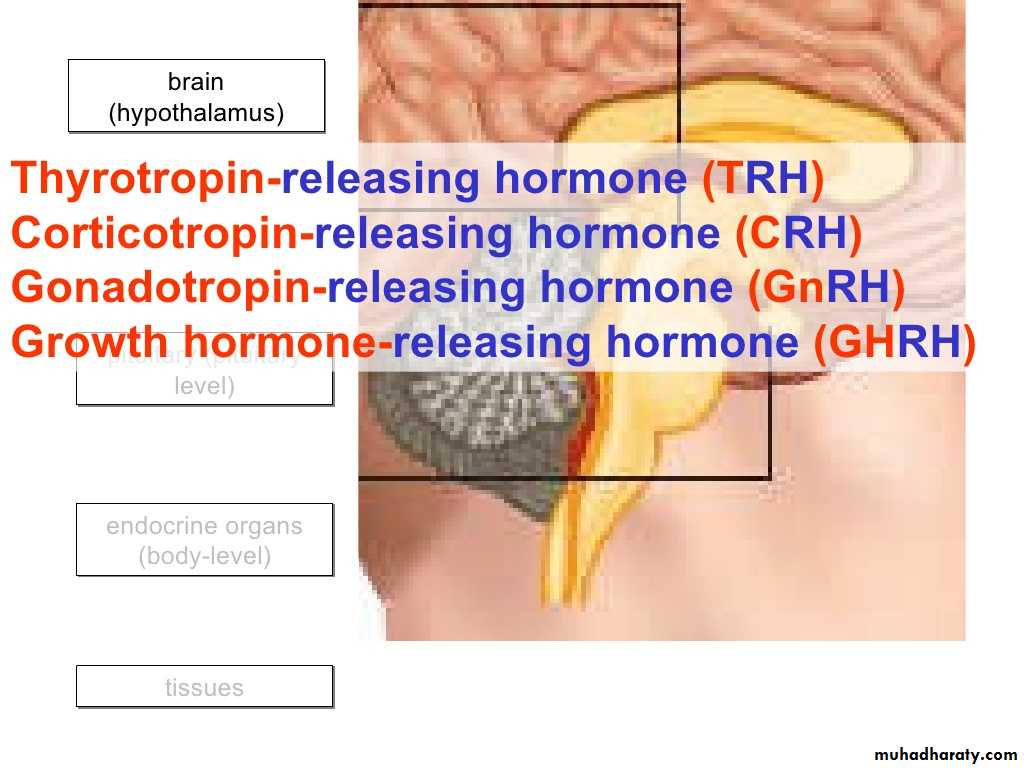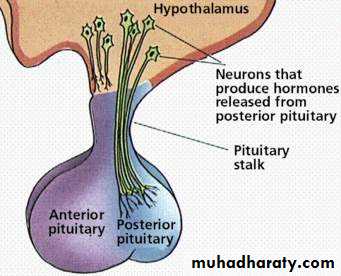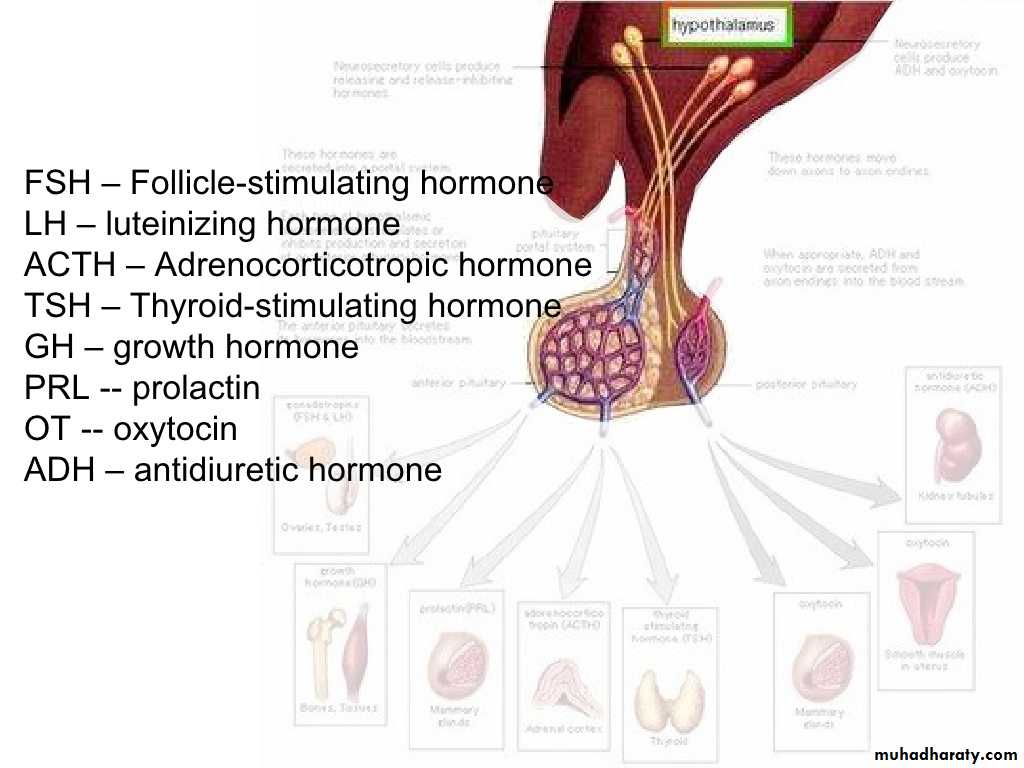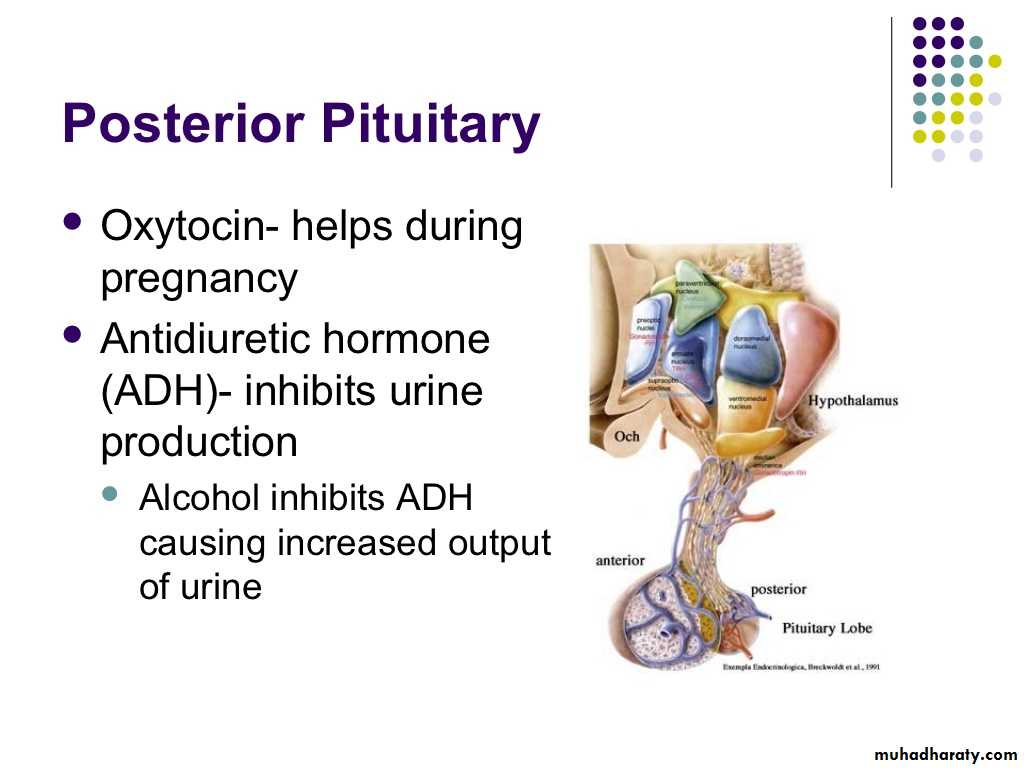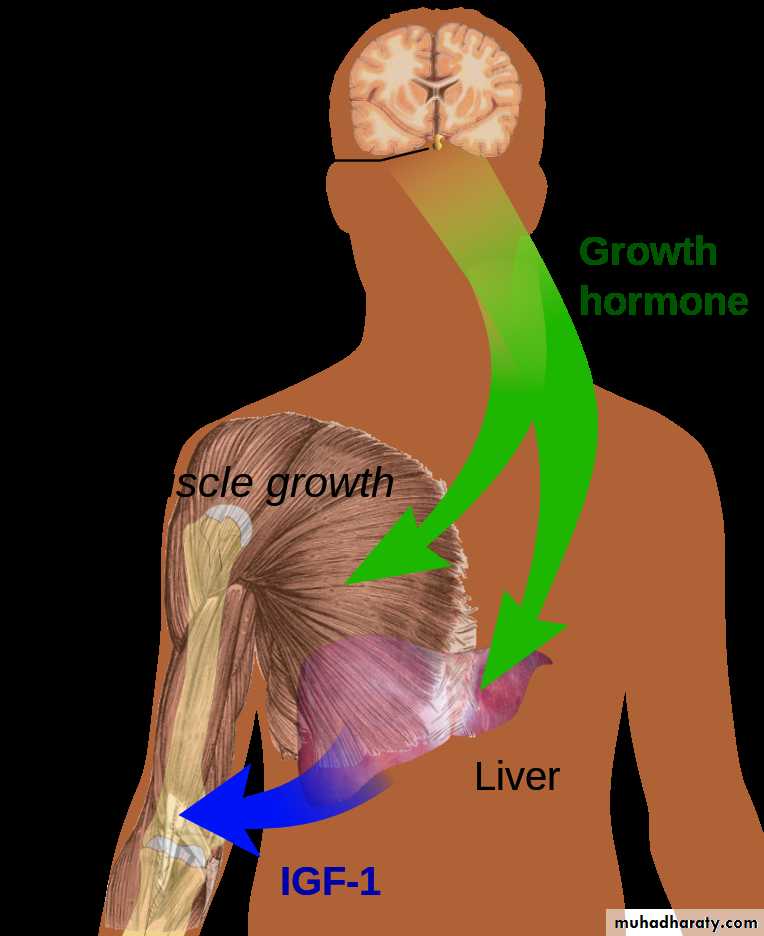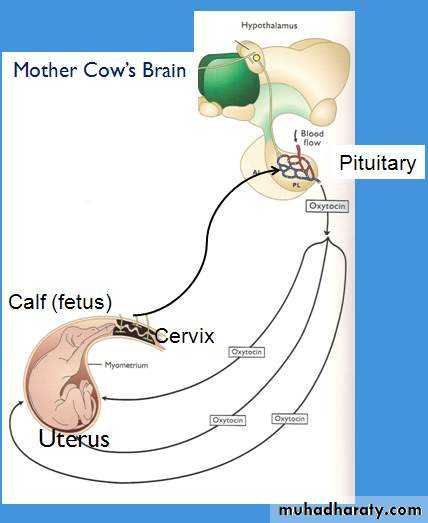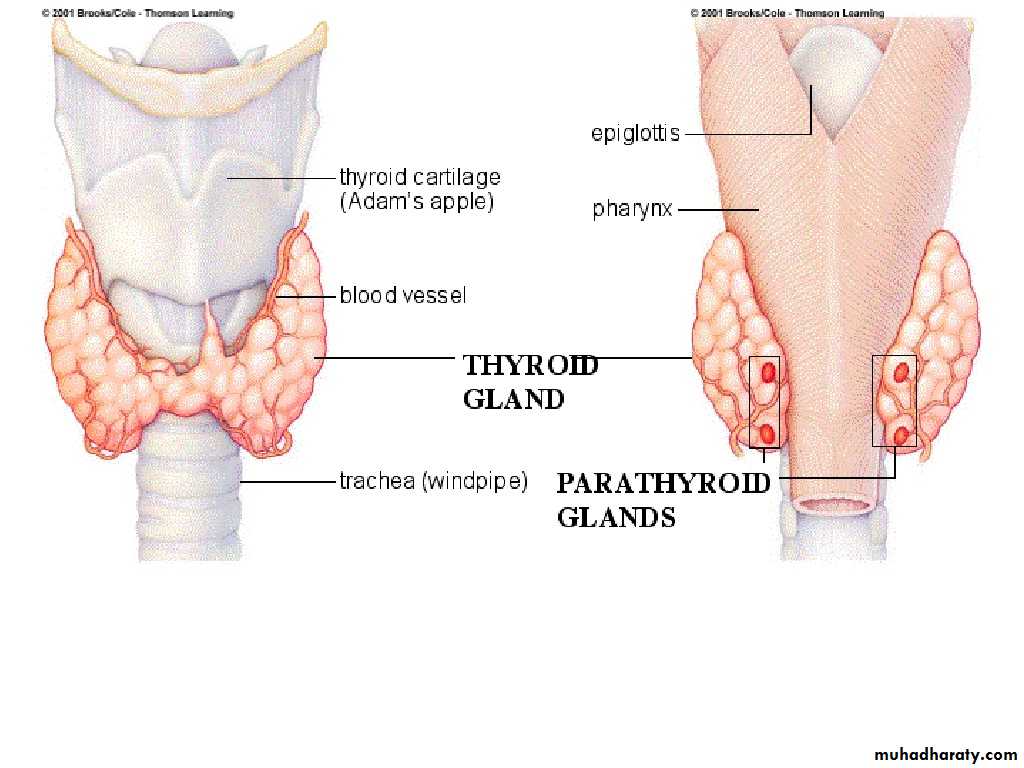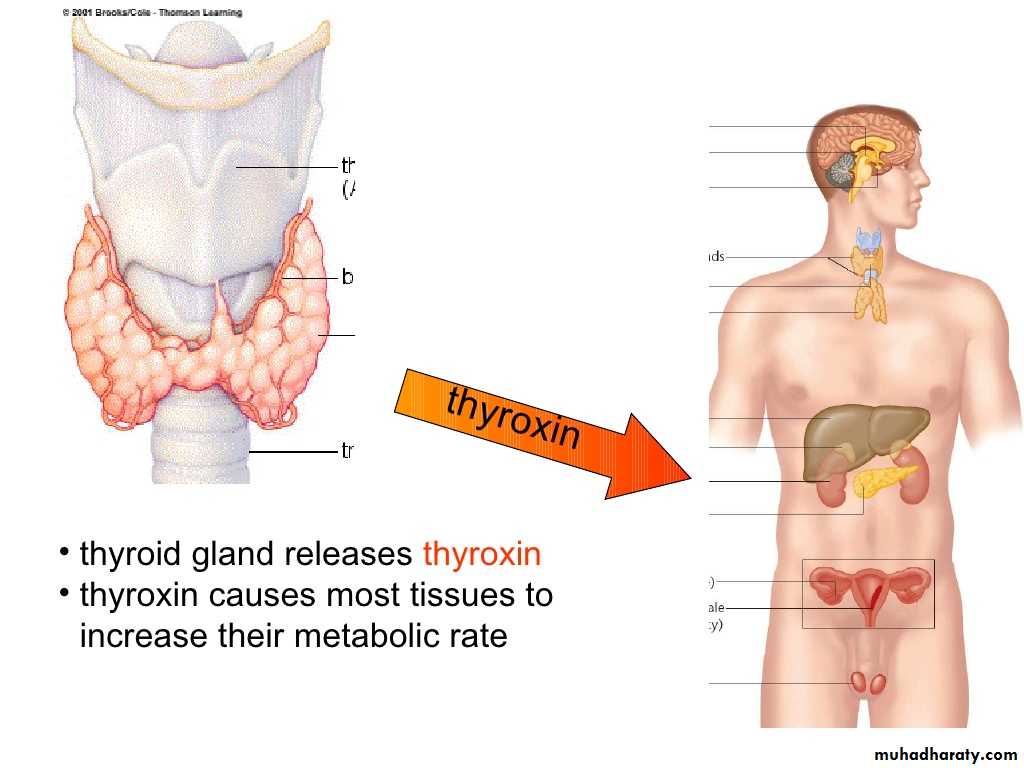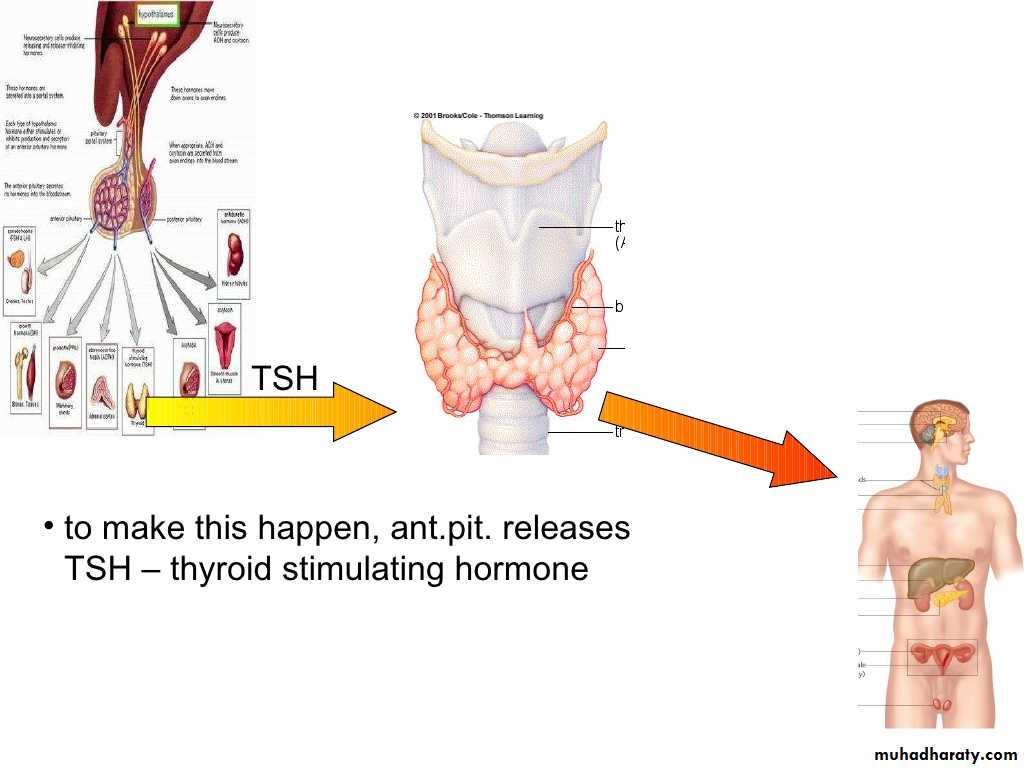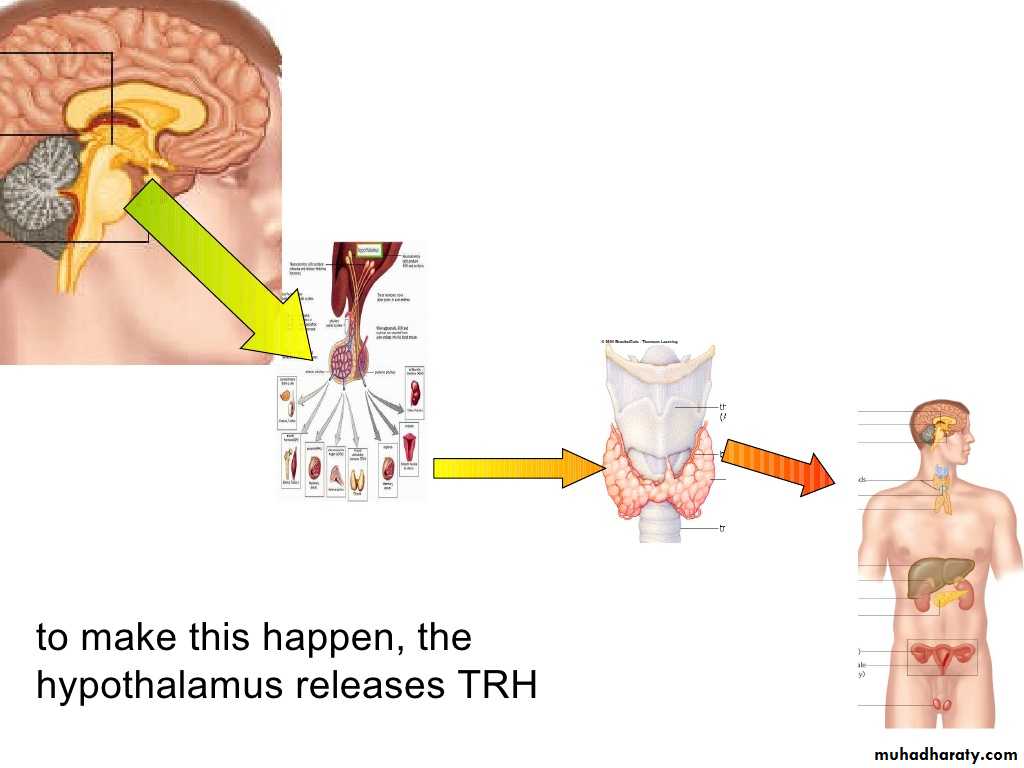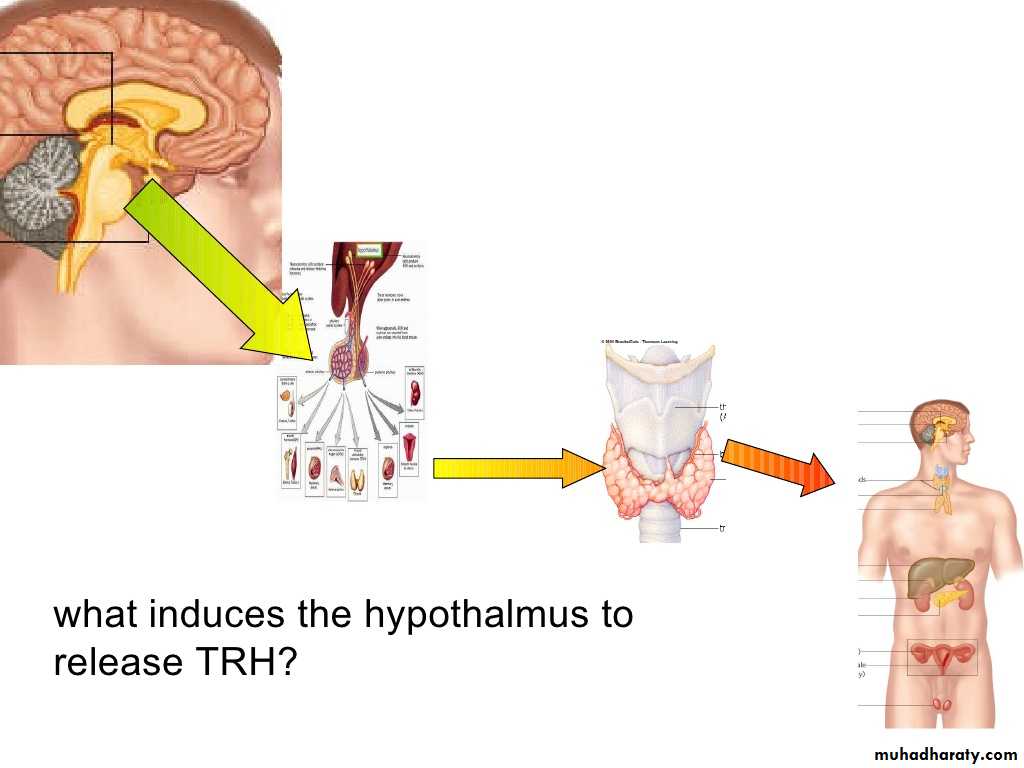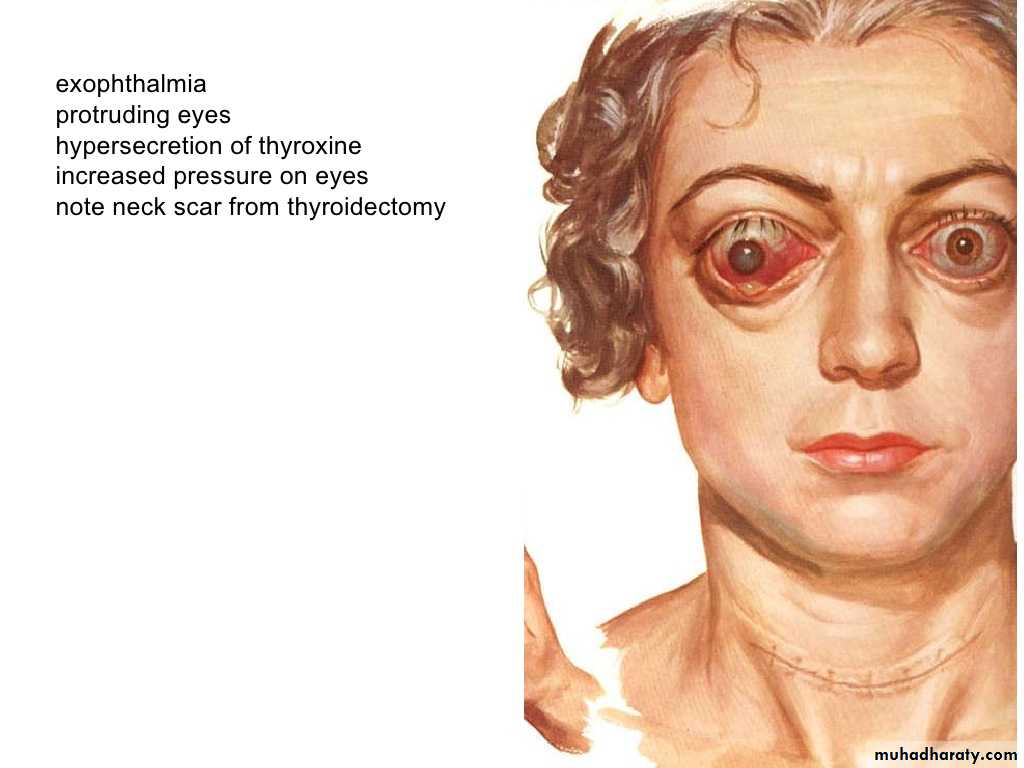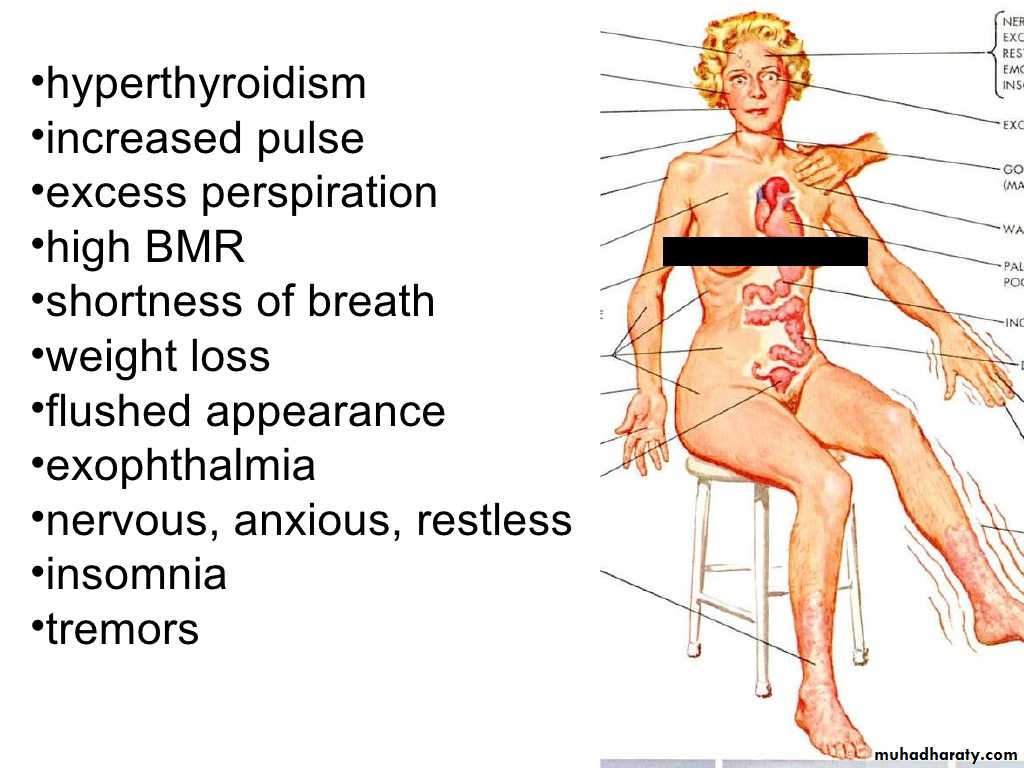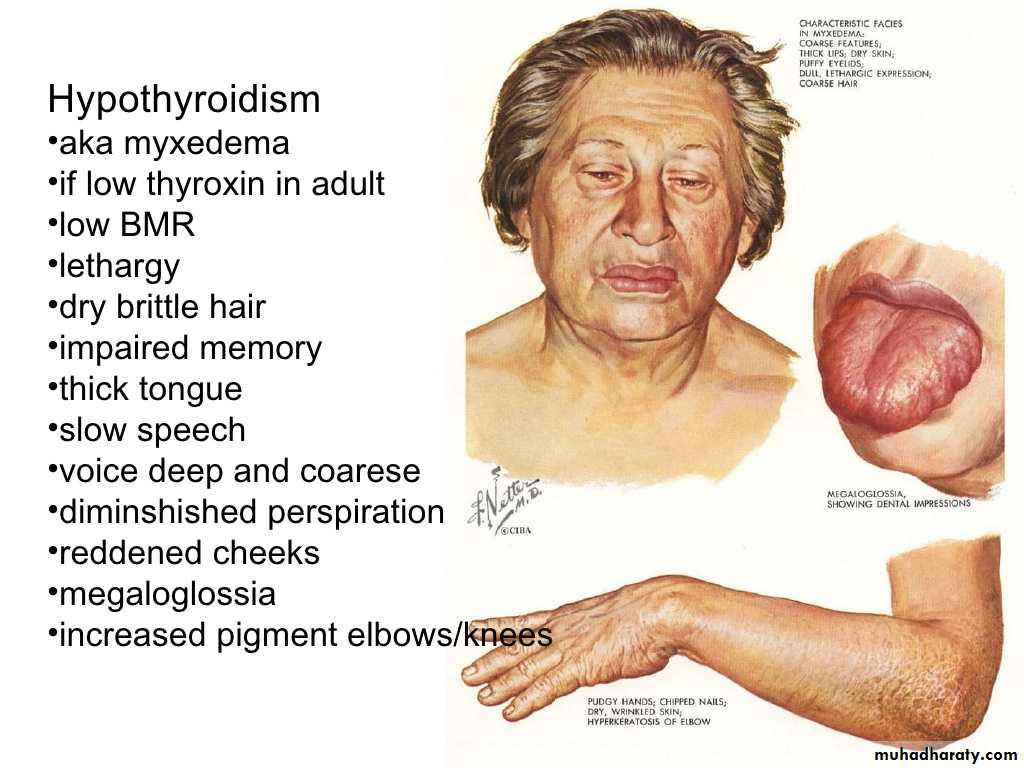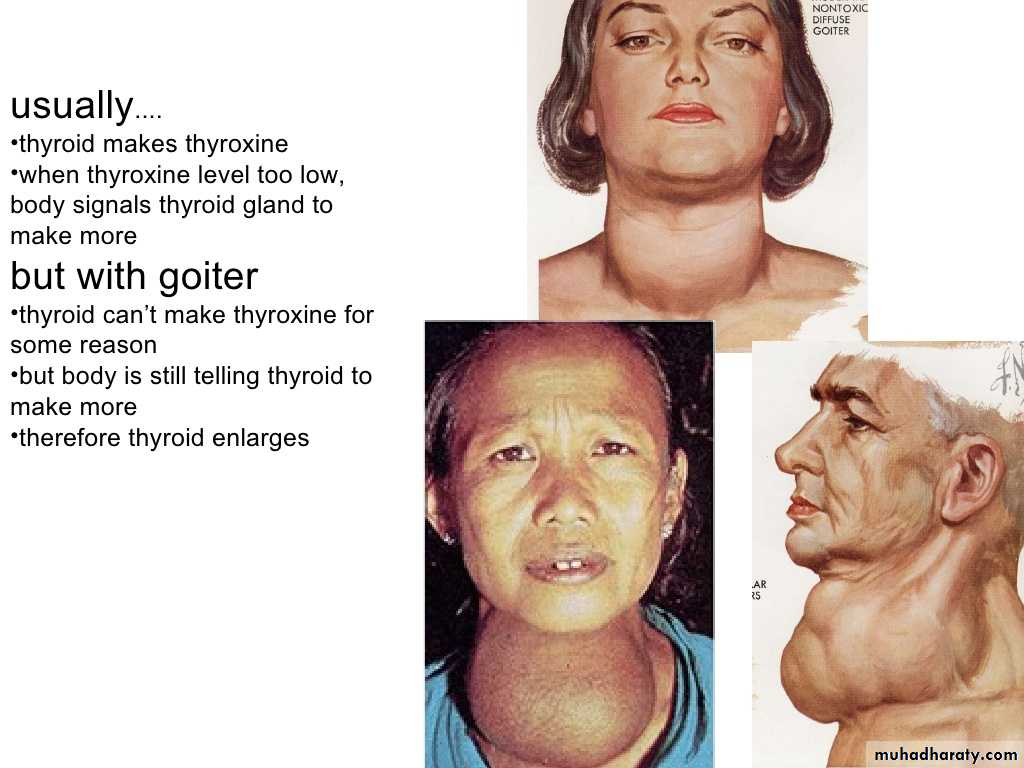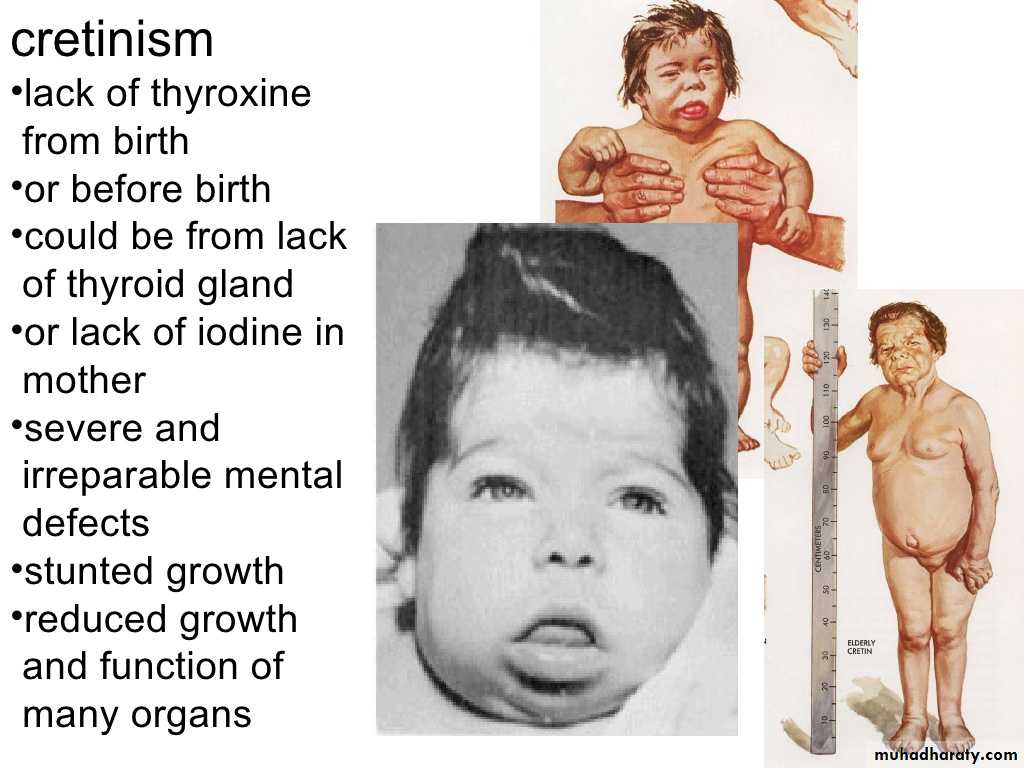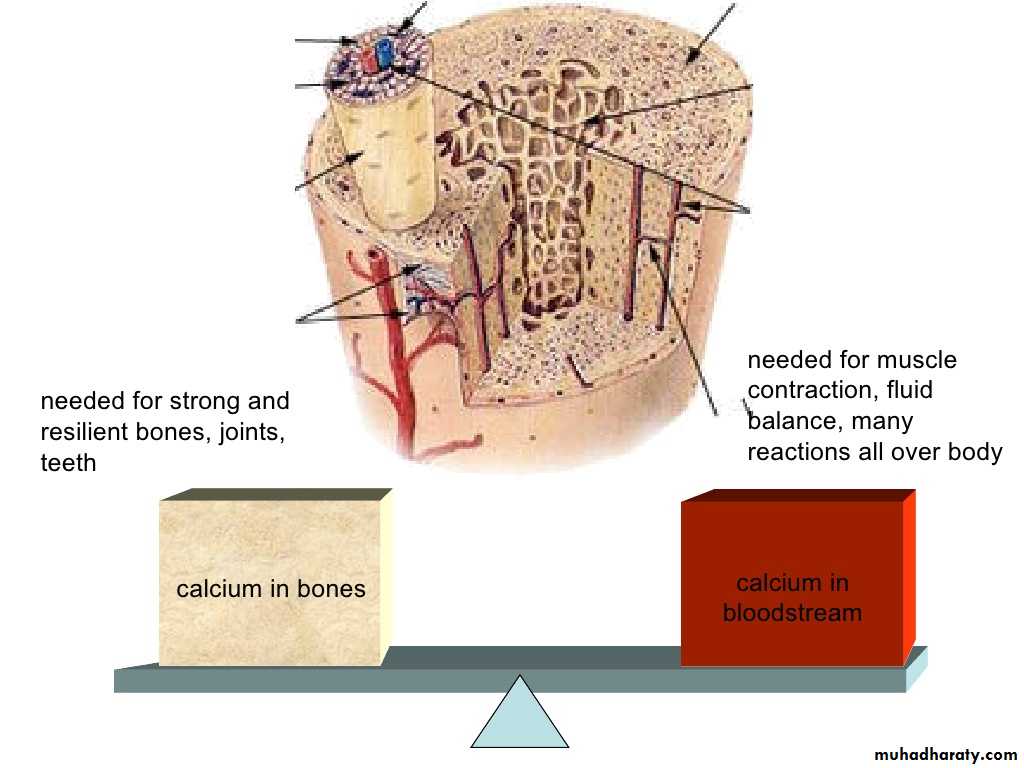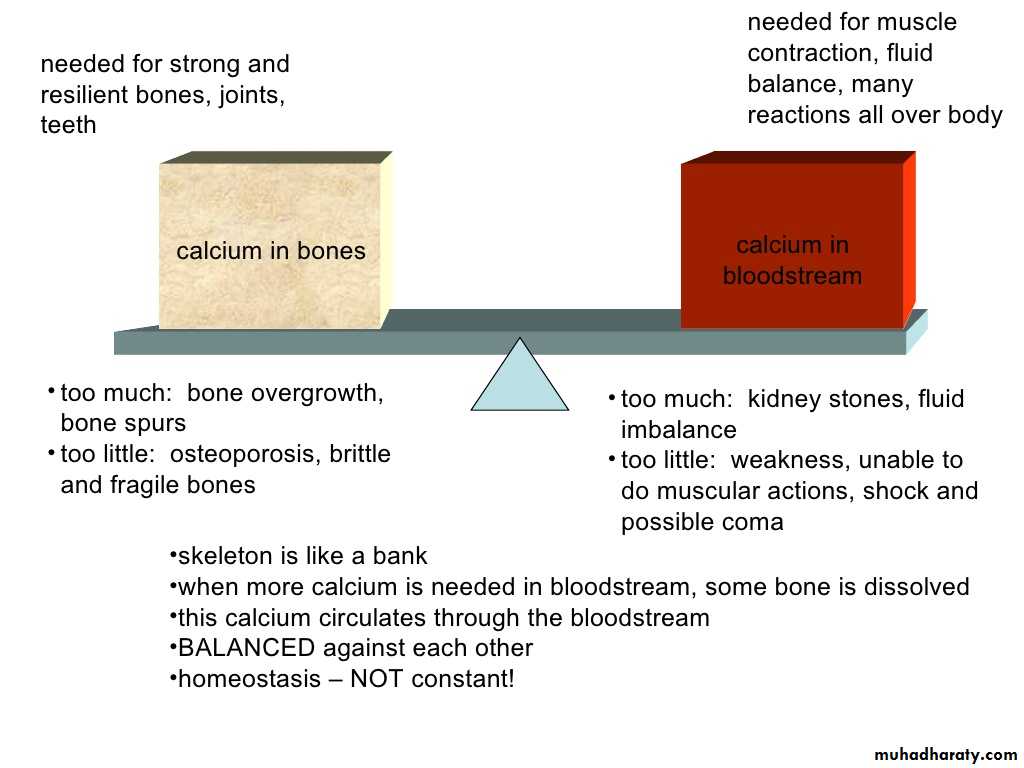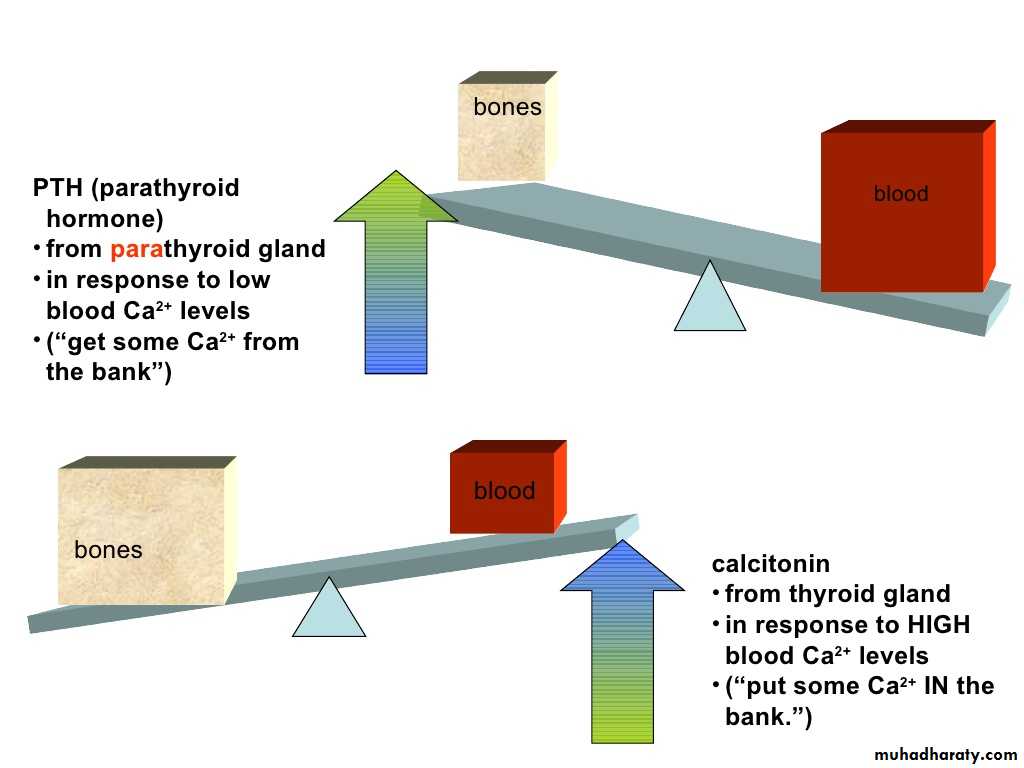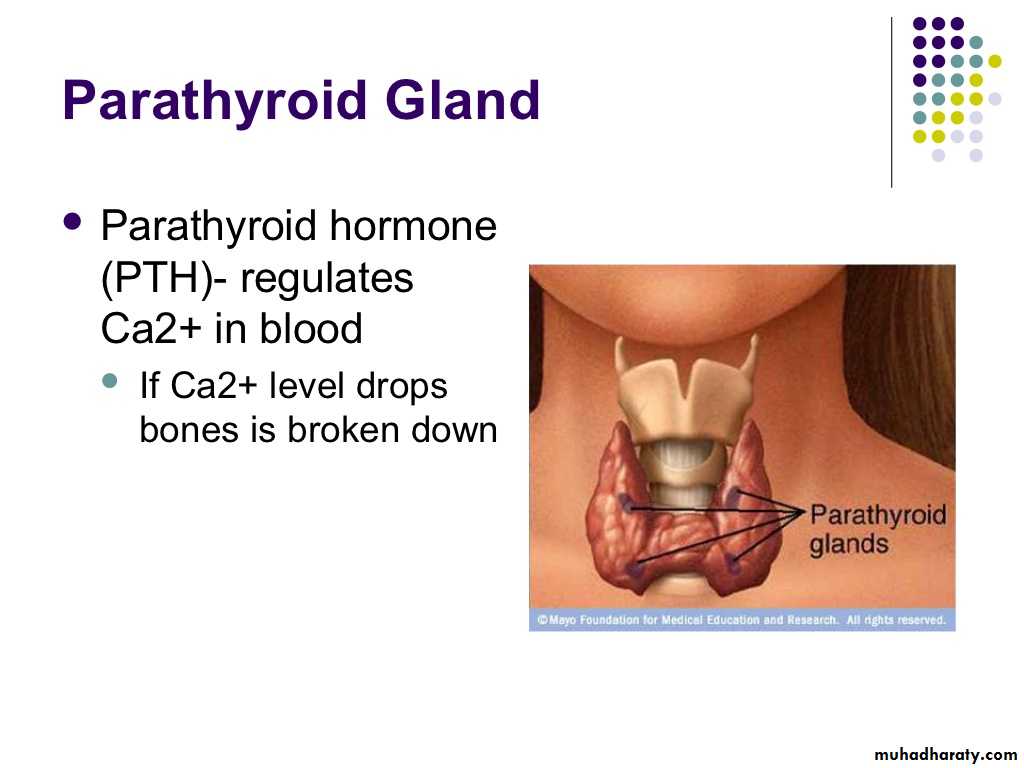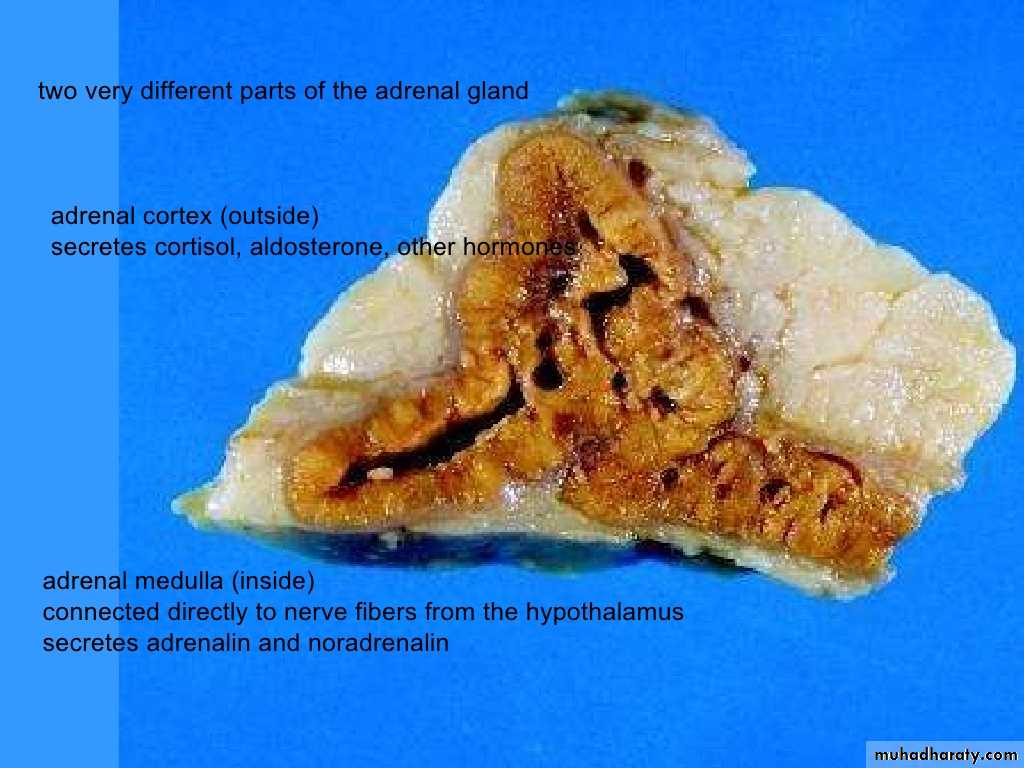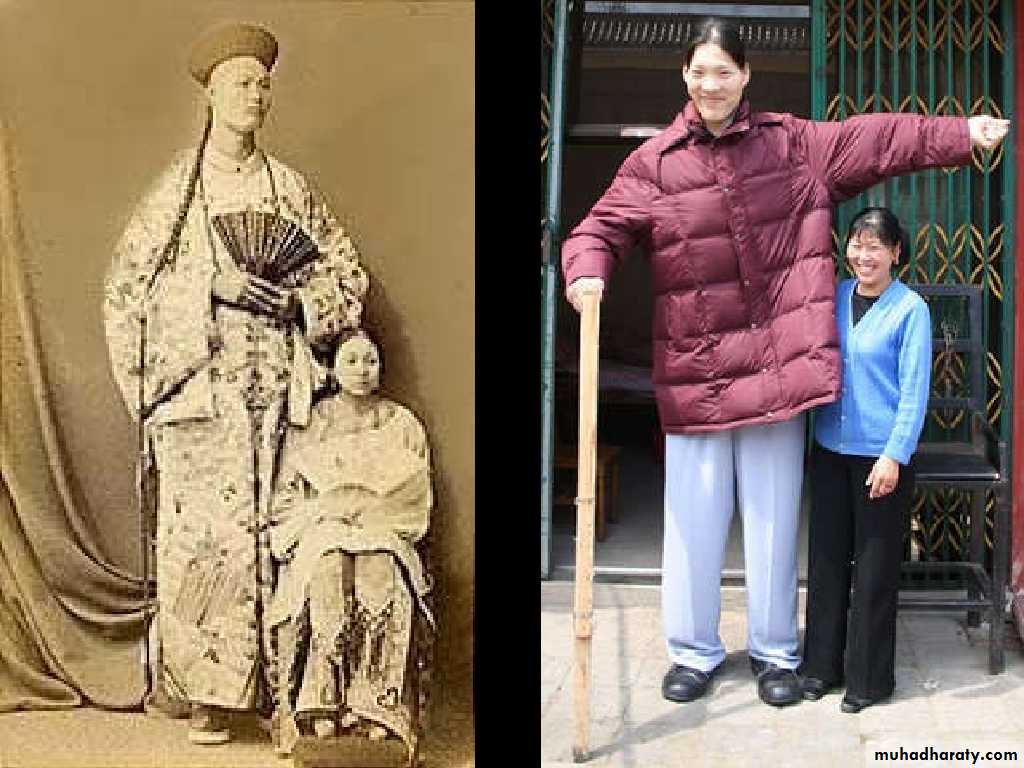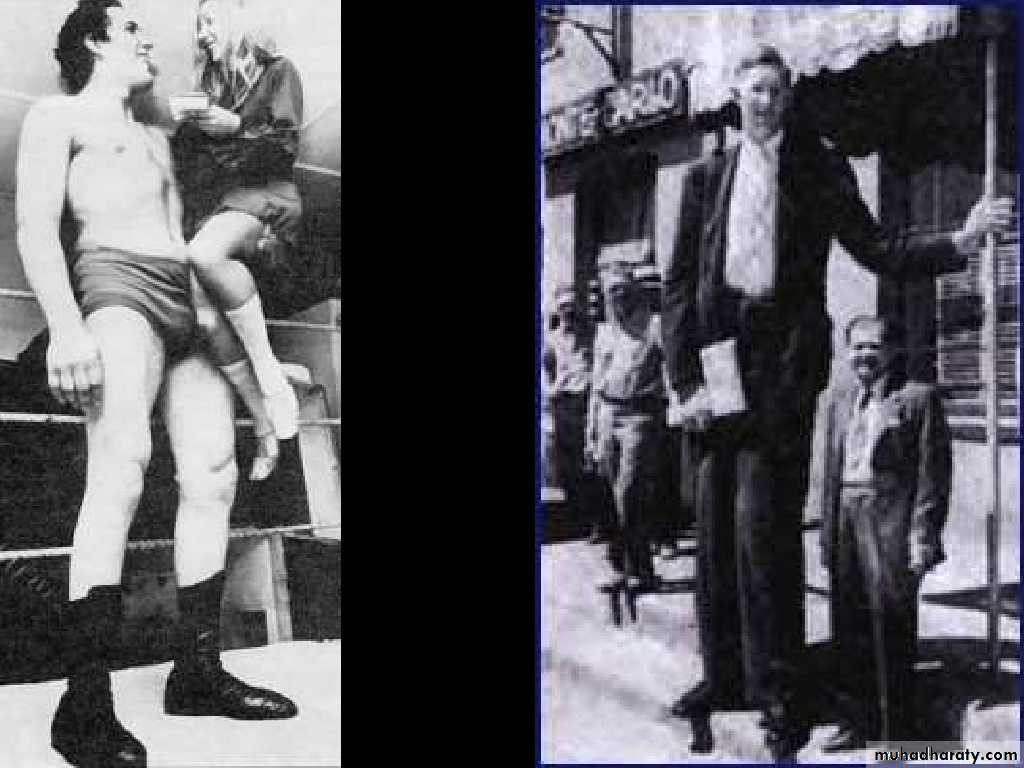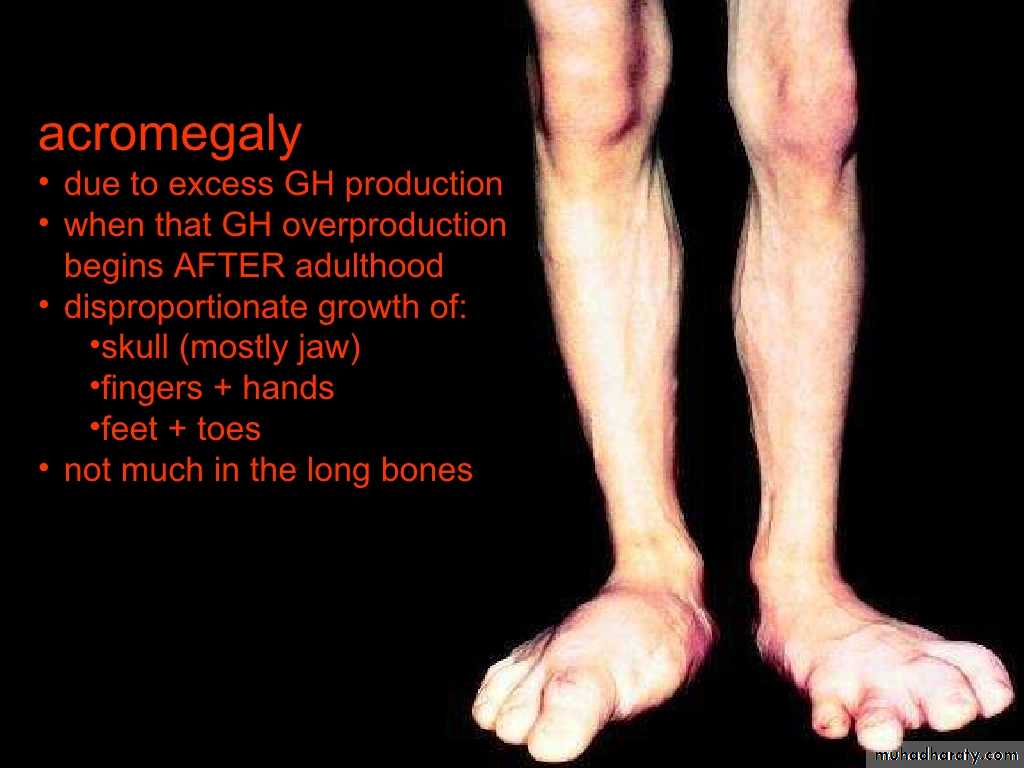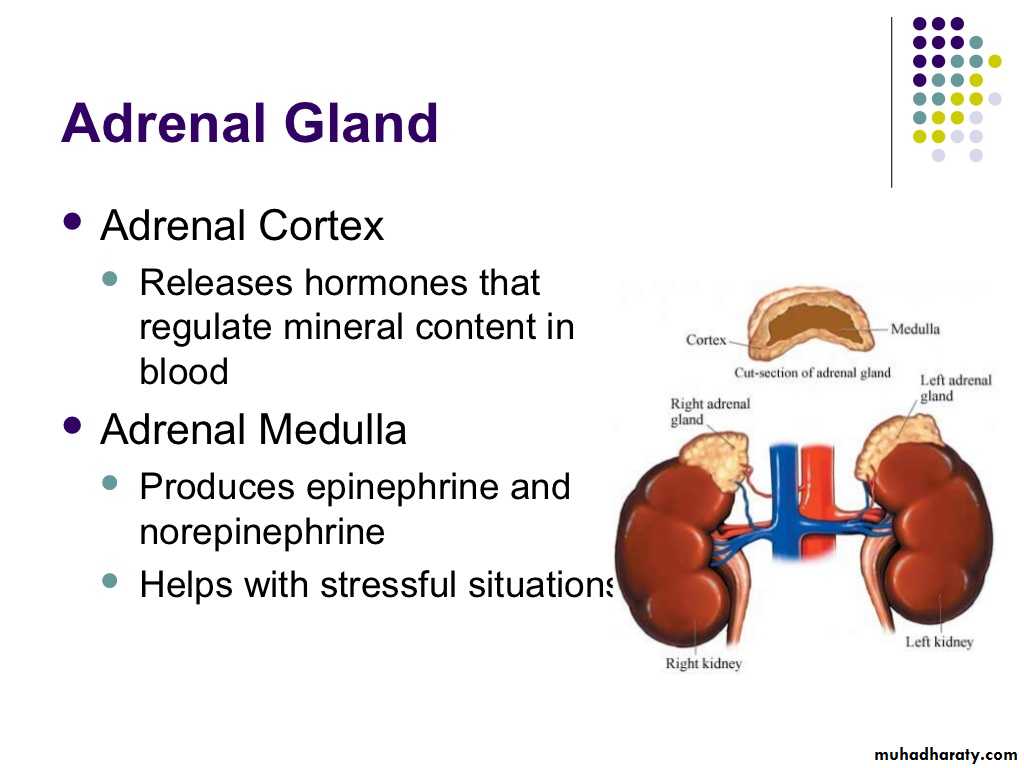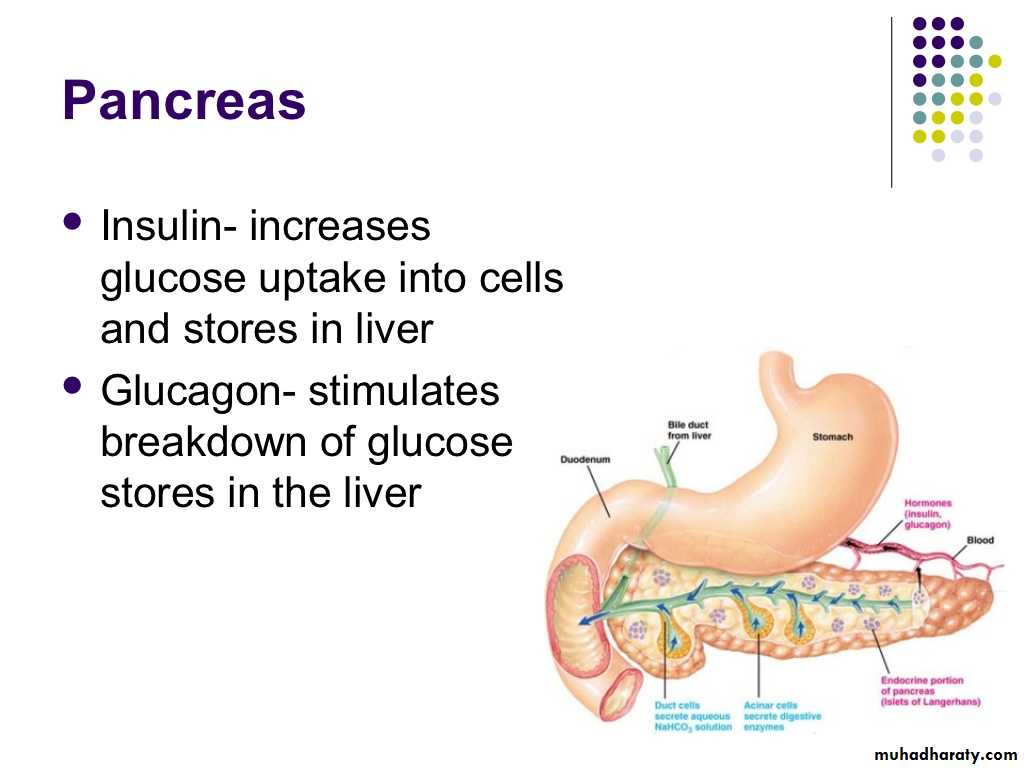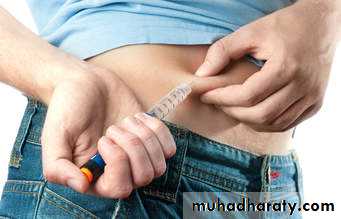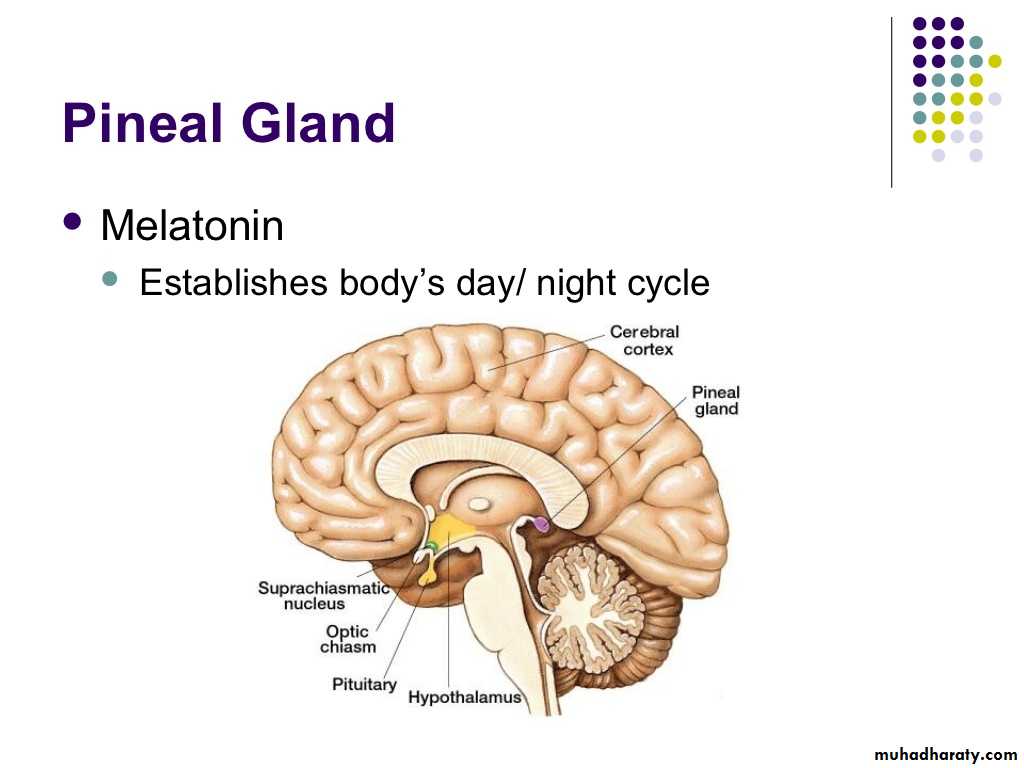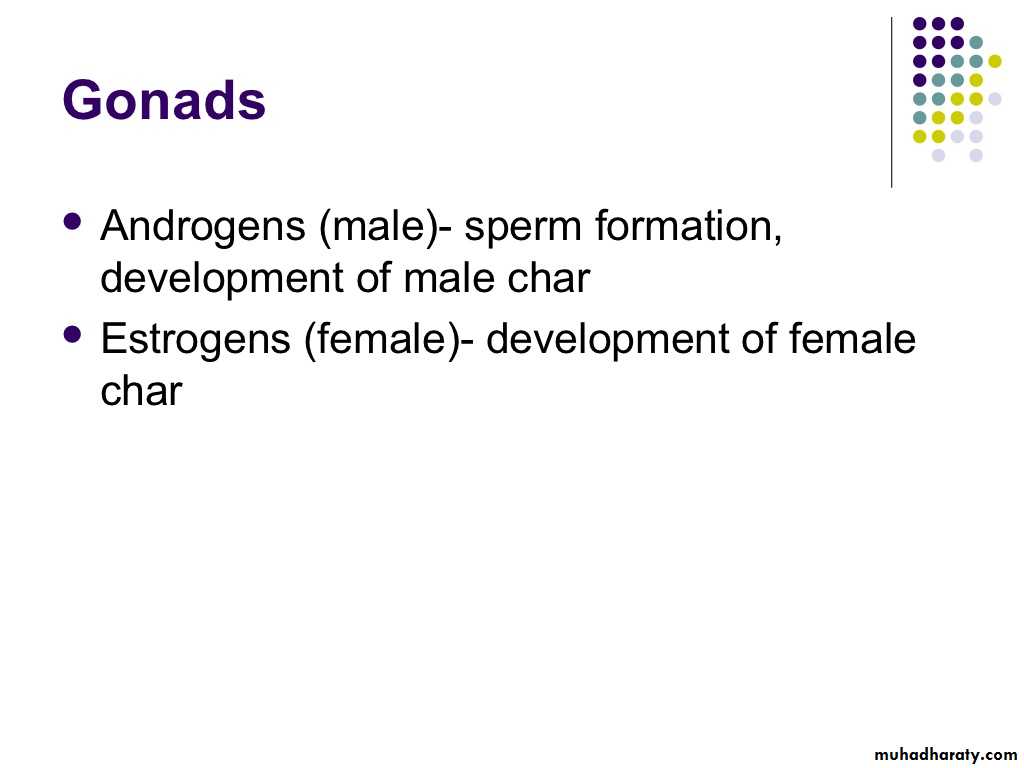بايو كمستري
ثاني اسنان موصل27/ 3 / 2016
1
Hormones are chemical messengers that are secreted (released) from endocrine cells (glands) into the blood and coordinate the activities of different cells in another part of the body (multicellular organism).
2
-It is synthesized by specific tissues (glands).-They are secreted directly into the blood which carries them to their sites of action.
They specifically alter the activities of response tissues (target organs or target cells.
Hormones act by binding to specific receptors in the target tissue of interest.
3
Or a hormone is a class of regulatory biochemical produced in all multicellular organisms by glands and transported by the circulatory system to a distant target organ to coordinate its physiology and behavior .Thus hormones serve as a major form of communication between different organs and tissues.
4
Hormones regulate a variety of physiological and behavioral activities, including :
Digestion, metabolism ,respiration, tissue function,lactation ,stress, sensory perception, sleep, love, movement, excretion ,growth and development , reproduction, and mood.
Generally, only a small amount of hormone is required to alter cell metabolism.
5
The Endocrine System regulates, coordinates and controls:
Growth and development.Male and female development.
How your body uses energy.
Levels of salts and sugars in your blood.
The amount (volume) of fluid in your body.
Appetite.
Many other body functions.
6
Gland
What it RegulatesPituitary
“Master Gland” that regulates all other Endocrine Glands, also releases growth hormone
Thyroid
Metabolism, body heat, bone growth
Parathyroids
Use of Calcium and Phosphorous
Hypothalamus
Links nervous system to endocrine system
AdrenalResponse in emergency or stressful situations, metabolism, blood pressure, salt balance
Pancreas
Blood sugar
Ovaries
Production of eggs; female characteristics
Testes
Production of sperm; male characteristics
Thymus
Parts of the immune system
7
The answer is Hormones!
8Where are they secreted from?
Hormone are secreted from the endocrine glands in the body. The glands are ductless, so hormones are secreted directly into the blood stream rather than by way of ducts.9
The Endocrine System
Controls many body functionsexerts control by releasing special chemical substances into the blood called hormones
Hormones affect other endocrine glands or body systems
Derives its name from the fact that various glands release hormones directly into the blood, which in turn transports the hormones to target tissues via ducts.
10
The Endocrine and Exocrine Systems
Exocrine glandsRelease products indirectly into ducts .
Ex/ sweat, tears, digestive juices
Endocrine glands
Secretes directly to blood stream.
No ducts.
Ex/ hormones
11
Endocrine Organs
Purely endocrine organsPituitary gland
Pineal gland
Thyroid gland
Parathyroid glands
Adrenal: 2 glands
Cortex
Medulla
Endocrine cells in other organs
Pancreas
Thymus
Gonads
Hypothalamus
12
How do hormones work?
Hormone travel through the blood and influence the activity of other glands and organs.They produce short-and long term changes in various cells and organs by acting like neurotransmitters at metabotropic receptors.
A hormone can only influence cells that have specific target receptors for that particular hormone.
13
• frequency.
•14
Hormones can classified by the location of the receptor and by the nature of the signal or second messenger used to mediate hormone action within the cell.
In animals, the brain is often a target organ for many of these hormones, and the brain in turn regulates the secretion of these hormones.
15
Hormones have the following effects on the body:
1-stimulation or inhibition of growth.2-wake-sleep cycle and other circadian rhythms.
3-mood swings.
4-induction or suppression of apoptosis (programmed cell death).
5-activation or inhibition of the immune system.
6-regulation of metabolism.
7-preparation of the body for mating, fighting, fleeing, and other activity.
8-preparation of the body for a new phase of life, such as puberty, parenting, and menopause.
9-control of the reproductive cycle.
10-hunger cravings.
11-sexual arousal.
16
The coupling between signal and hormone occurs in two ways:
poly peptide and protein hormones bind to receptors located in the plasma membrane and generated a signal that regulate various interacellular function by changing the activity of enzyme.
steroid and thyroid hormones interact with interacellular receptors and this complex provide the signal,
17
According to chemical composition:
1- Hormones derivative from amino acids as: Catechol amine derivative from tyrosine.Thyroid derived from tyrosine.
2- Hormones derivative from lipids as: Steroid (testosterone and cortisol). 1,25-dihydroxy cholcalciferol.
Prostaglandins hormones.
18
3-Hormones produce from simple peptides as: TRH (3 amino acids) Glucagon (29 amino acids) ACTH (39 amino acids) Vasopressine
4- Hormones composed from proteins as:
Parathyroid hormone(48 amino acid)
Growth hormone(191 amino acida)
Insuline
19
Chemical classes
Hormones fall into four main chemical classes:
1-Amino acid derived – Examples include melatonin and thyroxine.
2-Peptides, polypeptides and proteins. – Small peptide hormones include TRH and vasopressin. Peptides composed of scores or hundreds of amino acids are referred to as proteins. Examples of protein hormones include insulin and growth hormone. More complex protein hormones bear carbohydrate side-chains and are called glycoprotein hormones. Luteinizing hormone, follicle-stimulating hormone and thyroid-stimulating hormone are examples of glycoprotein hormones.
3-hormones derive from lipids such as arachidonic acid, lipoxins and prostaglandins.
4-Steroid Examples of steroid hormones include the sex hormones estradiol and testosterone as well as the stress hormone cortisol.
20
21
Hormones and their receptors
HormoneClass of hormone
LocationAmine (epinephrine)
Water-soluble
Cell surface
Amine (thyroid hormone)Lipid soluble
IntracellularPeptide/protein
Water solubleCell surface
Steroids and Vitamin DLipid Soluble
Intracellular22
Mechanism of action on target cells
23
24
Hormones: the body's chemical messengers
The human body secretes and circulates some 50 different hormones. These chemical substances are produced by endocrine cells, most of which are in glands. The hormones then enter the blood system to circulate throughout the body and activate target cells. The endocrine system, tightly linked to the nervous system, controls a large number of the body’s functions.25
Types of receptors
Receptors for the water soluble hormones are found on the surface of the target cell, on the plasma membrane.These types of receptors are coupled to various second messenger systems which mediate the action of the hormone in the target cell.
Receptors for the lipid soluble hormones reside in the nucleus (and sometimes the cytoplasm) of the target cell.
Because these hormones can diffuse through the lipid bilayer of the plasma membrane, their receptors are located on the interior of the target cell
26
Peptide Hormones
Peptide hormones do not enter the cell directly. These hormones bind to receptor proteins in the cell membrane.When the hormone binds with the receptor protein, a secondary messenger molecule initiates the cell response.
Because peptide hormones are water soluble, they often produce fast responses.
27
The hormones which are bind to receptors located in the plasma membrane of target cell(surface of cell).
Hormone bind to the surface of cells communicate with intracellular metabolic processes through intermediary molecules called second messenger which are generated as a consequence of the ligand receptor interaction.
The complex was activation the adenylate cyclase enzyme (on membrane of cell also) to conversion the:
PPi
ATP cyclic-AMPsecond messenger (as mediator)
28
The important feature of the second messenger is that the hormon needed cannot enter to the cell.
phosphodiesterase
C-AMP AMP29
(cytoplasm)
(nucleus)peptide or amino
acid-derived
hormone
(first messenger)
(extracellular
fluid)
cyclic AMP-
synthesizing
enzyme
cyclic AMP
ATP
inactive
enzyme
(second messenger)
active
enzyme
reactant
product
plasma membrane
nuclear
envelope
receptor
The hormone binds to
a receptor on the plasma
membrane of a target cell
1
The activated enzymes
catalyze specific reactions
4
The second
messenger activates
other enzymes
3
Hormone–receptor binding
activates an enzyme that catalyzes
the synthesis of a second messenger,
such as cyclic AMP
2
30
31
32
33
34
35
ACTH , LH , FSH , Secretin , Adrenaline , Glucagon
Adenylate cyclaseATP c-AMP
36
Hormones(polypeptide, proteins, glycoproteins, catecholamines)
(water soluble)Plasma membrane receptor
Second messengerIntracellular metabolic process
Gene expression
37Second messenger could be:
c-AMP, c-GMP, Ca++, IP3.
The important feature of the second messenger that the hormone needed not enter to the cell.
Phosphodiesterase was inhibited by caffeine which present in coffee and theophyline which present in tea. The inhibition will keep the c-AMP in long duration, so the different activities will continue until inhibition removed.
38
Second messengers for cell-surface receptors
Second messenger systems include:Adenylate cyclase which catalyzes the conversion of ATP to cyclic AMP;
Guanylate cyclase which catalyzes the conversion of GMP to cyclic GMP (cyclic AMP and cyclic GMP are known collectively as cyclic nucleotides);
Calcium and calmodulin; phospholipase C which catalyzes phosphoinositide turnover producing inositol phosphates and diacyl glycerol.
39
Actions of second messenger:
1- Activation the transport across the intracellular membrane.2- Protein synthesis inside the endoplasmic reticulum.
3- Nuclear reactions (synthesis DNA and RNA).
4- Lipolysis and fatty acid synthesis from T.G.
5- Glycogenolysis.
6- Phosphorylation and dephosphorylation.
40
Steroid HormonesHormonal interact with intracellular receptor
Steroid hormones or thyroid hormones enter through the cell membrane and bind to receptors inside of the target cell.These receptors moves into the nucleus and bind with a specific DNA sequence, that affecting gen expression.
By selectively affecting gen transcription and the production of the respective m-RNA .
The changing and metabolic processes are influence.
41
gene
plasmamembrane
ribosome
hormone receptor
steroid hormone
mRNA
(nucleus)
RNA polymerase
DNA
(cytoplasm)
new protein
(extracellular
fluid)
A steroid hormone
diffuses through the
plasma membrane
The hormone binds to a
receptor in the nucleus or to
a receptor in the cytoplasm
that carries it into the nucleus
The hormone–receptor
complex binds to DNA and
causes RNA polymerase to
bind to a nearby promoter
site for a specific gene
RNA polymerase catalyzes
the transcription of DNA into
messenger RNA (mRNA)
The mRNA leaves the
nucleus, then attaches to a
ribosome and directs the
synthesis of a specific protein product.
1
2
3
4
5
nuclear
envelope
42
43
Steroid Hormone Actions
Pass through the cell membraneBinds to specific receptors
Then enters the nucleus to bind with the cells DNA which then activates certain genes (Direct gene activation).
mRNA is synthesized in the nucleus and enters the cytoplasm and promotes protein synthesis for:
Enzymes as catalysts
Tissue growth and repair
Regulate enzyme function
44
The left diagram shows a steroid (lipid) hormone (1) entering a cell and (2) binding to a receptor protein in the nucleus, causing (3) mRNA synthesis which is the first step of protein synthesis. The right side shows protein hormones (1) binding with receptors which (2) begins a transduction pathway. The transduction pathway ends (3) with transcription factors being activated in the nucleus, and protein synthesis beginning. In both diagrams, a is the hormone, b is the cell membrane, c is the cytoplasm, and d is the nucleus.
45
Regulation of hormones secretion
The quantities of hormone was regulated by feed-back inhibition which combine the :Hypothalamus + pituitary glands + Target tissues
46• Hypothalamus
• Releasing hormones• Pituitary glands
• Stimulating hormones(Tropic hormones)
• Target organ
• Target hormone
47
Regulation
The rate of hormone biosynthesis and secretion is often regulated by negative feedback control mechanism. Such a mechanism depends on factors that influence the metabolism and excretion of hormones. Thus, higher hormone concentration alone cannot make the negative feedback mechanism. Negative feedback must be made by overproduction of an "effect" of the hormone.Hormone secretion can be stimulated and inhibited by: Other hormones (stimulating- or releasing -hormones)
48
Negative feedback means that when enough hormone is in the body, the body stops producing the hormone until it is needed again.
You eat. Glucose (sugar)
in the blood increases.Increased glucose is detected by receptors
that notify the brain. It sends a messageto the pancreas to produce insulin.
Insulin tells muscle and liver to take up
glucose from the bloodstream and use it for energyor store it for later. Brain reduces appetite.
Blood glucose level drops as
it is removed by the cells.Pancreas stops making insulin.
49
50
One special group of hormones is the tropic hormones that stimulate the hormone production of other endocrine glands. For example, thyroid-stimulating hormone (TSH) causes growth and increased activity of another endocrine gland, the thyroid, which increases output of thyroid hormones.
To release active hormones quickly into the circulation, hormone biosynthetic cells may produce and store biologically inactive hormones in the form of pre- or prohormones. These can then be quickly converted into their active hormone form in response to a particular stimulus.
51
52
53
54
55
56
The feed-back inhibition takes these ways:
1- If the quantity of hormone was increased in target tissue, the hypothalamus hormone was inhibition, then the feed-back take the long loop.2- The target hormone was inhibit the tropic hormone, then the feed-back take the short loop.
57
3- The tropic hormone was inhibit the hypothalamus hormone, then the feed-back take the short loop.4- If the quantity of target hormone was decreased, the hypothalamus hormone was activation and regulate the secretion of pituitary glands. These glands are stimulated to secrete their specific hormones, which are carried by the blood to the target tissues to secrete the third hormone that is the organ tissue was needed.
58
59
The hypothalamus gland :Small structure at the base of the brain .Regulates many body functions, including:
1- Appetite.
2- Body temperature.3- Regulates the pituitary glands.4- It function in stress situation . 5- Mood regulation.
60
secrete hormones which are called releasing hormones (or releasing factors) , which are send to the pituitary gland , located just below the hypothalamus. Hypo means: underThalamus is from Greek word meaning : a bed
61
Hypothalamus hormones
Releasing hormones (releasing factors) of hypothalamus1- TRH (thyroid releasing hormone) -----turns on* TSH
2- CRH (corticotropin releasing hormone) -----turns on ACTH
3- GnRH (gonadotropin releasing hormone) ---turns on FSH and LH
4- PRH (prolactin releasing hormone) -----turns on PRL
5- GHRH (growth hormone releasing hormone) ----turns on GH
The hypothalamus controls secretion of hormones which in their turn control the secretion of hormones by the thyroid gland, the adrenal cortex and gonads: in this way the brain controls these endocrine glands
62
*Note: “turns on” means causes to be released
The hypothalamus gland secrete hormones which are called releasing hormone(or releasing factors)which are send to the pituitary gland, located just below hypothalamus.
63
What is the pituitary gland?
The pituitary is an important gland in the body and it is often referred to as the 'master gland', because it controls several of the other hormone glands (e.g. adrenals, thyroid).It is usually about the size of a pea and consists of two parts (often called lobes) - a front part, called the anterior pituitary and a back part, called the posterior pituitary.
64
65
66
The anterior pituitary produce 7 hormones called tropic (tropin) hormones:
GH ( somatrotropic hormone) stimulates growth of skeletal epiphyseal plates and body to synthesize protein
ACTH stimulates the adrenal cortex to produce corticosteroids: aldosterone and cortisol
FSH stimulates follicle growth and ovarian estrogen production; stimulates sperm production
LH has a role in ovulation and the growth of the corpus luteum; stimulates androgen secretion in testes ;stimulates secretion of testosterone in male
67
The others from the anterior pituitary…
TSH stimulates the thyroid to produce thyroid hormone(thyroxine)PRL stimulates mammary glands in breast to make milk
MSH stimulates melanocytes; may increase mental alertness68
69
From the posterior pituitary
ADH (antidiuretic hormone , vasopressin) stimulates the kidneys to reclaim more water from the urine, raises blood pressure
Oxytocin prompts contraction of smooth muscle in reproductive tracts, in females initiating labor and ejection of milk from breasts
70
71
TSH: thyroid-stimulating hormone
ACTH: adrenocorticotropic hormone
FSH: follicle-stimulating hormone
LH: luteinizing hormone
GH: growth hormone
PRL: prolactin
MSH: melanocyte-stimulating hormone
ADH: antidiuretic hormone
OxytocinTRH (thyroid releasing hormone)
turns on TSH
CRH (corticotropin releasing hormone)
turns on ACTH
GnRH (gonadotropin releasing hormone) turns on FSH and LH
PRF (prolactin releasing hormone)
turns on PRL
GHRH (growth hormone releasing hm)
turns on GH
TSH stimulates the thyroid to produce thyroid hormone
ACTH stimulates the adrenal cortex to produce corticosteroids: aldosterone and cortisol
FSH stimulates follicle growth and ovarian estrogen production; stimulates sperm production and androgen-binding protein
LH has a role in ovulation and the growth of the corpus luteum; stimulates androgen secretion by interstitial cells in testes
GH ( somatrotropic hormone) stimulates growth of skeletal epiphyseal plates and body to synthesize protein
PRL stimulates mammary glands in breast to make milk
MSH stimulates melanocytes; may increase mental alertness
ADH (antidiuretic hormone or vasopressin) stimulates the kidneys to reclaim more water from the urine, raises blood pressure
Oxytocin prompts contraction of smooth muscle in reproductive tracts, in females initiating labor and ejection of milk from breasts
Can we put it all together?
Red is from hypothalamus
Black is from pituitary
Anterior pituitary hormones are:
1-Growth hormone (GH) ,Somatotropin :is a peptide hormone secreted by somatotrope cells which are part of anterior pituitary gland.
The secretion is stimulated by sleep, stress, exerise, fasting, certain drugs.
GHRH GH Target organ
Hypothalamus pituitary72
73
The pituitary gland sends a signal by way of the hormone oxytocin to the uterus causing contractions. The pressure of the fetus on the cervix sends a signal back to the brain which then stimulates the release of more oxytocin. This causes more contractions. The fetus pushes harder on the cervix. More oxytocin is released. The system continues until birth occurs.
74
Summary
Hormones are your body's chemical messengers. They travel in your bloodstream to tissues or organs. They work slowly, over time, and affect many different processes, including:Growth and development.
Metabolism - how your body gets energy from the foods you eat.
Sexual function.
Reproduction.
Mood.
Endocrine glands, which are special groups of cells, make hormones. The major endocrine glands are the pituitary, pineal, thymus, thyroid, adrenal glands, and pancreas. In addition, men produce hormones in their testes and women produce them in their ovaries.
Hormones are powerful. It takes only a tiny amount to cause big changes in cells or even your whole body. That is why too much or too little of a certain hormone can be serious. Laboratory tests can measure the hormone levels in your blood, urine, or saliva. Your health care provider may perform these tests if you have symptoms of a hormone disorder. Home pregnancy tests are similar - they test for pregnancy hormones in your urine.
75
76
77
78
79
80
81
82
83
84
85
86
87
88
89
90
91
92
93
94
95
96
97
98
99







